Retro Replay Review
Gameplay
Santa Paravia and Fiumaccio strikes a careful balance between simplicity and depth, positioning itself squarely between the rudimentary mechanics of HAMURABI and the sprawling systems of modern 4X titles like Civilization. At its core, you act as the ruler of a fledgling Italian city-state in the 15th century, tasked with managing grain reserves, population growth, and treasury balances. Each turn, decisions revolve around buying and selling steres of grain, allocating hectares of land, and setting tax rates. Misjudge the weather or hoard too little food, and you risk famine—overinvest in land during a drought, and your coffers run dry.
What elevates Santa Paravia is its hot-seat multiplayer option, allowing up to five (or seven in later releases) players to vie for the titles of Count, Marquis, Grand Duke, and ultimately King. This competitive layer transforms what might otherwise be a solitary ledger-balancing exercise into a tense race for prestige. You’ll gauge not only your own economy but also watch your rivals’ moves, sometimes seeking to outbid them on land or undercut them in the grain market.
The game’s adjustable difficulty settings cater to both newcomers and veterans. Lower levels soften the blows of poor harvests and rat infestations, while higher tiers amplify every setback, demanding meticulous planning and a bit of luck. From sinking surplus funds into marketplaces and mills to financing private armies and lavish cathedrals, every investment carries risk and reward. A misstep in taxation can stifle growth; overzealous spending can leave you vulnerable to the next bad season.
Graphics
By today’s standards, Santa Paravia and Fiumaccio’s visuals are charmingly antiquated, featuring simple icons and basic pixel art representations of your city’s key buildings. Yet there’s a certain elegance in its pared-down style. Grain sacks, palaces, and mercenary armies are all rendered with straightforward clarity, ensuring you always know exactly what you’re buying or selling without wading through complex menus.
The clean, board-game–inspired layout emphasizes function over frills. Real-time animations are minimal, but each building icon pulses or changes slightly when you purchase new structures or when disasters strike. This subtle feedback loop keeps you immersed, reminding you of the tangible effects of your economic decisions without overwhelming you with flashy special effects.
Color palettes remain muted, evoking parchment and ink, but small artistic flourishes—like the flicker of candlelight in the palace icon or the creeping shadow of rats around your grain stores—add mood and personality. While it won’t compete with AAA visual spectacles, its retro charm and intuitive interface make resource management feel accessible and even a bit quaint.
Story
Santa Paravia and Fiumaccio doesn’t follow a traditional narrative, but it immerses you in the social and political milieu of Renaissance Italy. You begin as a lowly Count, striving to build credibility with your citizens by providing food and security. Progression to Marquis and beyond feels earned, as you weather famines, rat plagues, and rival nobles’ machinations.
The absence of scripted characters or branching dialogues places the emphasis squarely on emergent storytelling. Your tale unfolds through numbers: a spike in grain prices, an unexpected troop rebellion, or a costly cathedral project that outruns its budget. Each saved steres of grain or strategic land purchase contributes to the larger saga of your reign.
Random events—such as a sudden death by plague or an unforeseen economic downturn—inject drama, forcing you to adapt or perish. Though frustrating at times, this randomness captures the precariousness of rule in the era. There’s a genuine thrill in overcoming adversity and watching your humble fief transform into a prosperous duchy, all driven by your resource-allocation choices.
Overall Experience
As an early pioneer of the city-state management genre, Santa Paravia and Fiumaccio delivers a surprisingly robust experience beneath its simple veneer. The satisfying cycle of harvest, trade, taxation, and investment keeps you engaged across multiple playthroughs, while the steep learning curve and occasional brutal setbacks ensure that every victory feels well-earned.
Multiplayer hot-seat sessions add a social dimension that modern strategy games could learn from. Sitting around the same screen, negotiating grain prices or gloating over a rival’s failed harvest, creates camaraderie and competition in equal measure. Even solo players will find the AI competitors challenging enough to maintain tension throughout.
Despite its age, Santa Paravia and Fiumaccio remains a compelling exercise in economic strategy. Its clean interface, adjustable difficulty, and thematic resonance with Renaissance power struggles make it a worthwhile purchase for fans of management sims and history buffs alike. Whether you’re aiming to become the next Grand Duke or simply curious about the roots of city-building games, this classic title offers hours of strategic intrigue and resource-driven drama.
 Retro Replay Retro Replay gaming reviews, news, emulation, geek stuff and more!
Retro Replay Retro Replay gaming reviews, news, emulation, geek stuff and more!
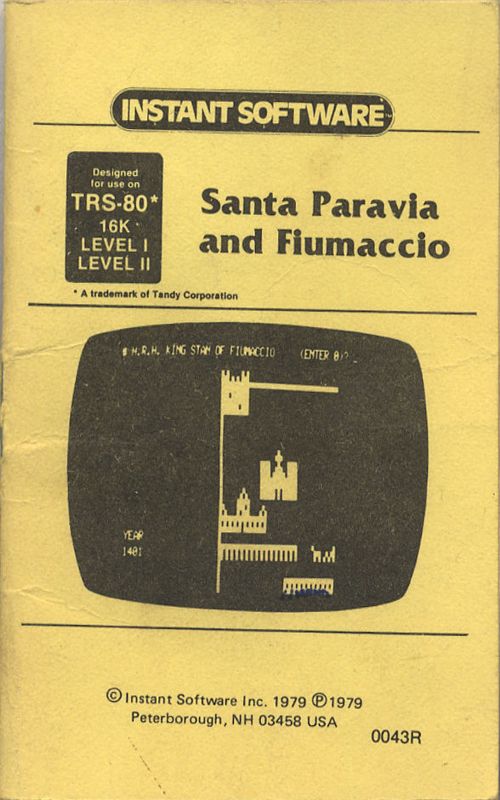
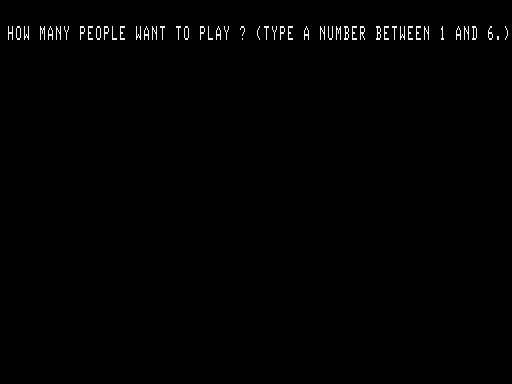
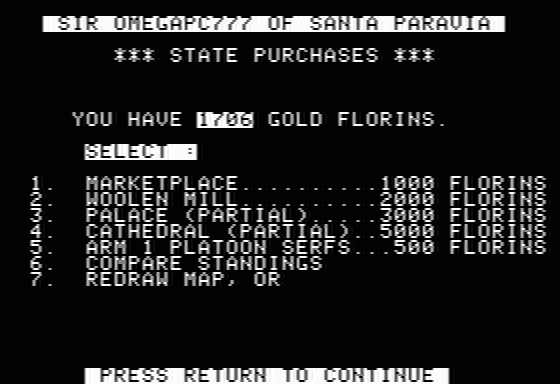
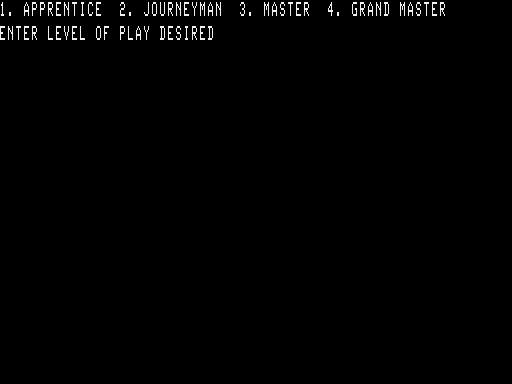
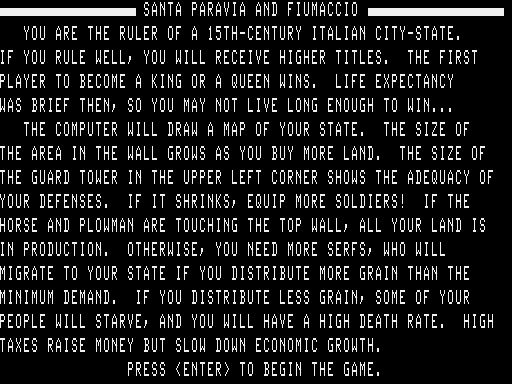
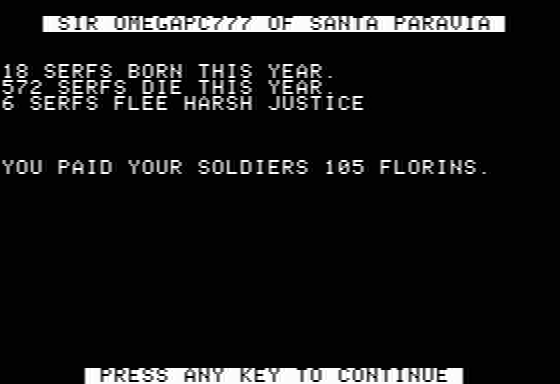



Reviews
There are no reviews yet.